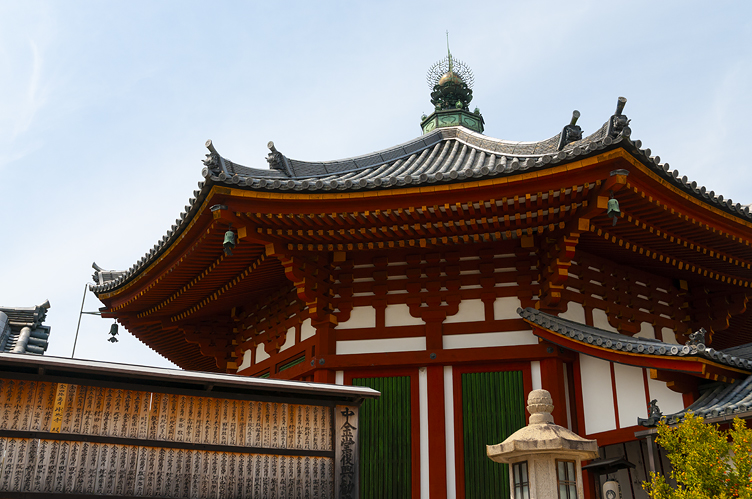snack time
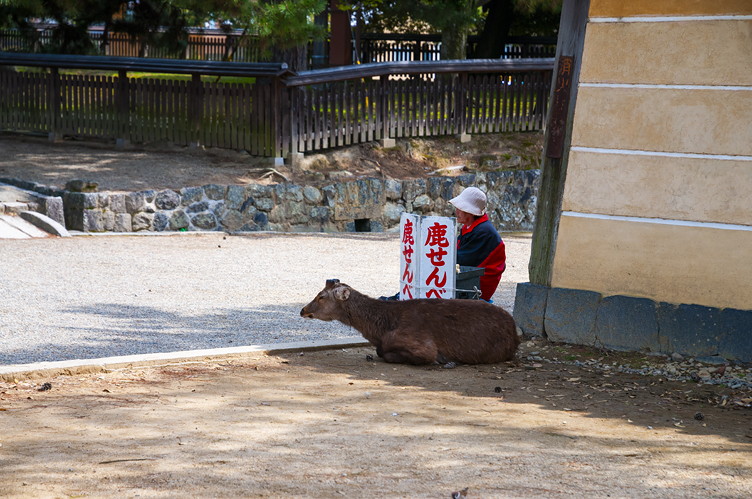
It's probably fair to say that many tourists come to Nara 奈良市 because of its population of friendly deer, knowing little or nothing of the city's amazing architecture or history. I'd hope, though, that once they get there they discover the rest. It would be entirely possible, for example, to visit just the main park and see the deer, walk around a bit, notice the perimeter walls of Tōdai-ji 東大寺 but never realise what's inside. More on that later.
The deer, called sika deer ニホンジカ (or 日本鹿, literally “Japan deer”), are undoubtedly an integral part of the aesthetic though, and add a lot of fun to the city as well!
Above, one smartly waits next to a vendor selling deer crackers.
irradiance
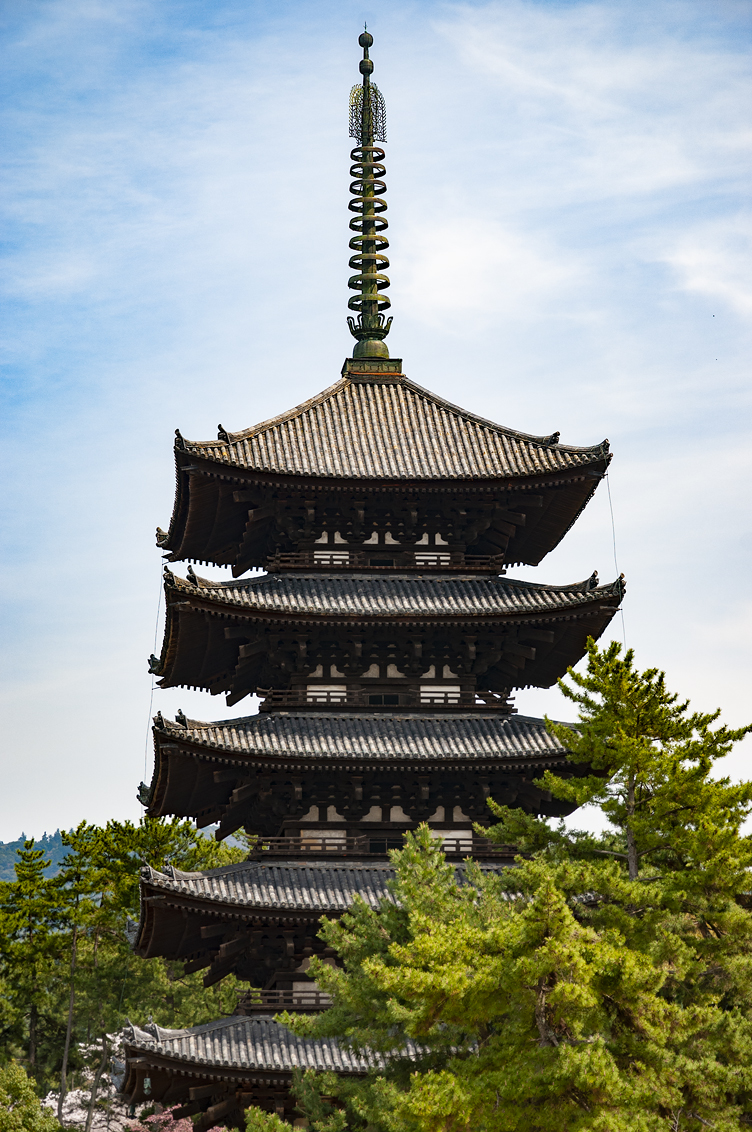
Walking around further, I was caught again by the sight of the five-storied pagoda 五重塔 of Kōfuku-ji 興福寺, towering in a way that appears to defy physics. The current pagoda was constructed in 1426 and seems to have vibrated through time itself to today, slipping past the rest of the world.
waiting for snow
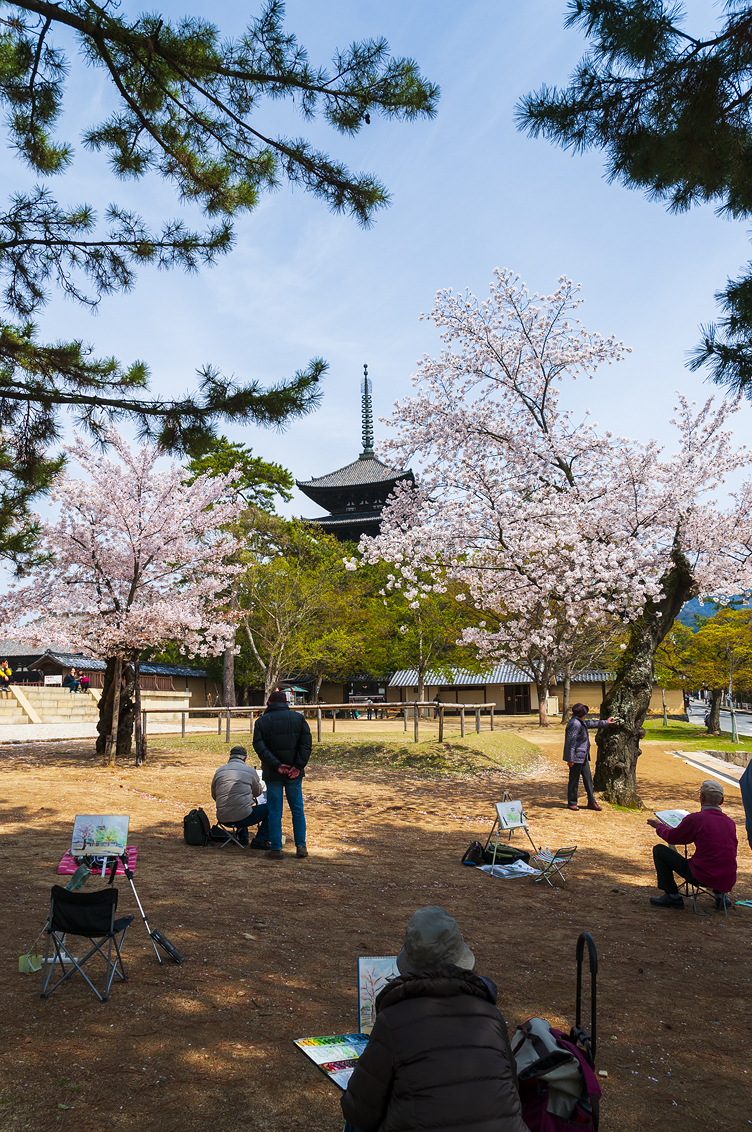
In front of the Central Golden Hall 中金堂 in the shade, a small group painted the beautiful view of the five-storied pagoda 五重塔 – a designated National Treasure – rising behind the cherry trees.
I loved the stillness of this place and the way the fallen petals had started to accumulate like a dusting of snow.
blast radius
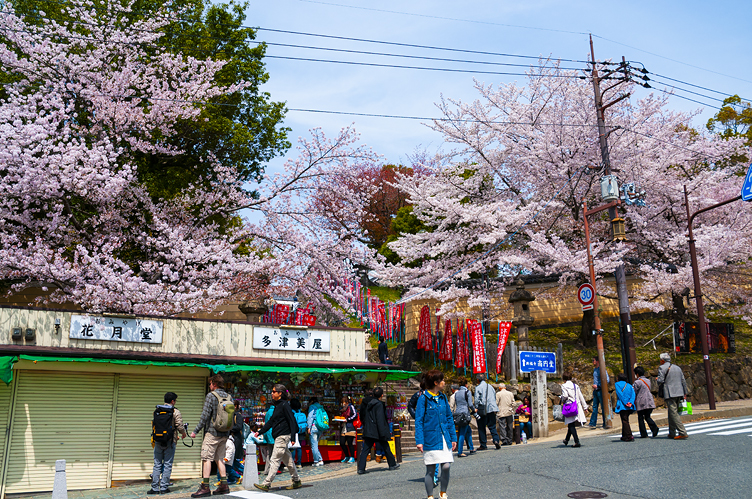
I awoke the next morning feeling a bit under the weather, or at least a bit exhausted after so many long days. The hotel breakfast was refreshing though, with the mix of Western and Japanese cuisine always welcome, washed down with a fairly acidic black coffee.
The plan for the day was to explore the ancient capital of Nara 奈良市, which is easily accessed via a couple of train lines. While the Kintetsu Railway 近鉄 service is faster and arrives closer to the main sightseeing area, I decided on the JR service that alights at Nara Station 奈良駅 a few blocks to the west. This afforded a bit of city sightseeing too.
Here, the end of a row of little tourist shops and the south entrance of Kōfuku-ji 興福寺 where the blossoms loomed in still-life explosions of pink.
high line

Outside Saga-Arashiyama Station 嵯峨嵐山駅 the driver gave me some stickers as a memento, took a few more happy snaps and was on his way again.
While waiting on the platform to return to Kyōto Station 京都駅 I met an Australian guy who'd also been at the monkey park earlier. We boarded the train and chatted while watching the afternoon view scroll by, comparing photos and notes about where we'd been and where we were going next. He was in Japan, also solo, to rent some fast cars and drive the mountain roads. It was nice to chat with another Aussie and it made the ride back a short one. There's nothing quite like that view of the city from the JR Sagano Line 嵯峨野線 as the sun sinks below the buildings.
Parting ways, I took the metro north to check in at my next hotel, Hotel Monterey Kyoto ホテルモントレ京都, then relaxed for a bit before heading out to explore the city and find a place for dinner. Not far from Karasuma Oike Station 烏丸御池駅 and located underground, I found a small and cosy restaurant called Haru's Kitchen which served a mix of Japanese and Italian food. The staff were friendly and it was just the right meal after a long day.
keepsakes

Taking a rickshaw might seem like a gimmicky thing, but it's a bit of fun and a way to get another view into what makes Japan unique. It didn't take long before a driver was available to take me back to the station, and with the rain starting to fall he put extra effort into making me snug: wrapped in a blanket and with a hand warmer too!
Rickshaw drivers 車夫 are transporters, maintainers of culture, local guides and entertainers in equal measure, and take pride in delivering a good experience.
The rain and the wind picked up fast, whipping up the surface of the river and sending people scurrying with umbrellas. The driver, undeterred, whisked me through the streets, stopping to snap a few photos of me along the way – the true tourist package. A few heavy bursts of rain later and the bad weather swept past, then subsided almost completely as we neared the station.
